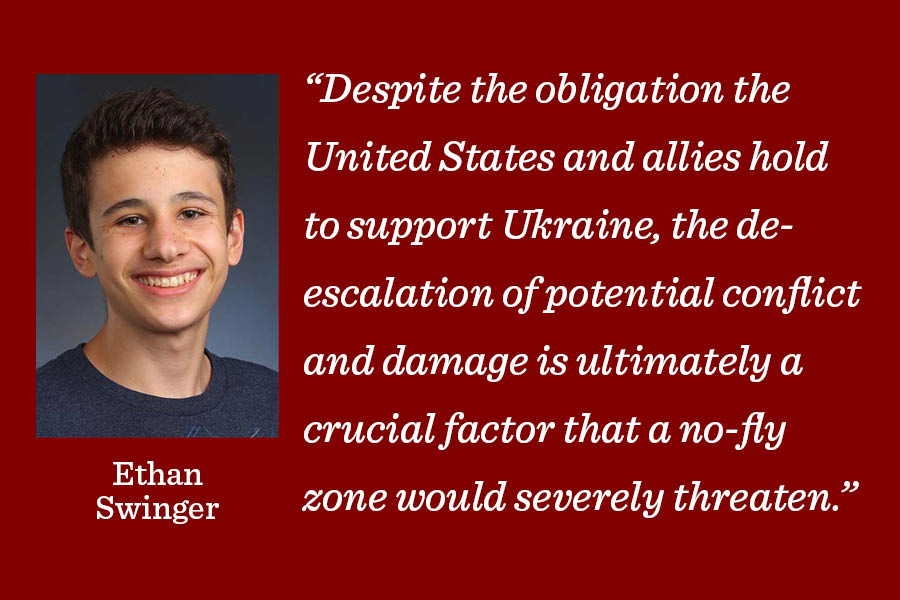Ukraine no-fly zone would dangerously escalate conflict
Midway Staff
Reporter Ethan Swinger argues that while we should support Ukraine, enforcing a no-fly zone in Ukraine would be both too ineffective and too escalatory to be a wise strategic choice for the United States.
April 7, 2022
The Russian invasion of Ukraine that began Feb. 24 has shown little signs of resolution, and although Ukraine has put up impressive resistance, the situation continues to gravely threaten the lives of civilians and the country’s infrastructure. In desperation, the situation prompts Ukrainian officials to request a no-fly zone be instituted over Ukrainian airspace.
The establishment of a no-fly zone in Ukraine would ban any unpermitted aircraft in Ukrainian airspace, which would ensure further safety and protection of Ukrainian civilians. Any aircrafts violating the airspace will be shot down.
Despite arguments from Ukrainian leaders and Ukraine President Volodymyr Zelenskyy, a no-fly zone should not be formed over Ukraine since it would significantly increase the threat of large-scale war and it would not prevent further invasion and civilian attacks.
For the successful formation of a Ukrainian no-fly zone, safety and control are needed over the designated Ukrainian airspace. However, Russia possesses long-range air defenses, and numerous aircraft and airfields situated in Russian territory, that pose an exigent threat over Ukraine. Attacking them is the only viable option for successfully operating a no-fly zone, and doing so would almost certainly lead to a declaration of war with Russia, which currently possesses the world’s largest nuclear arsenal. The necessity to prevent an expansive conflict is a situation NATO and the United States recognize, reflected in their cautious actions in their pursuit of aiding Ukraine, including rejecting the idea of a Ukrainian no-fly zone.
Additionally, Russian attacks have largely not been by aircraft, so establishing a no-fly zone would almost certainly involve more nations in the war but still not halt terrestrial Russian attacks on civilians. Moreover, maintaining a no-fly zone would also be extremely resource-intensive and would require continuous air patrols, surveillance and maintenance.
The payoff for a potential Ukrainian no-fly zone is minimal compared to the cost of escalating and possibly instigating a full-scale war.
Although a no-fly zone is not an effective measure for ensuring the safety of Ukrainians, its purpose of protecting vulnerable Ukrainian civilians and infrastructure from violence is a necessity that cannot be ignored. The United States recently finalized a $13.6 billion aid package to Ukraine, but the administration should take additional steps in aiding Ukraine such as providing additional military equipment, including available aircraft that were going to be decommissioned. The United States also possesses valuable intelligence, which, given to Ukraine, would be crucial in helping to pinpoint the location of Russian forces.
Despite the obligation the United States and allies hold to support Ukraine, the de-escalation of potential conflict and damage is ultimately a crucial factor that a no-fly zone would severely threaten.
This story was edited to include the interactive image on May 2.


















